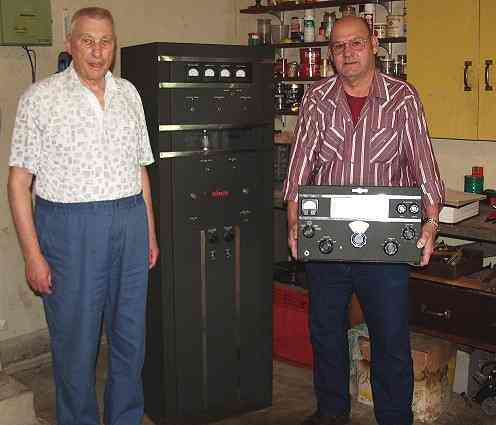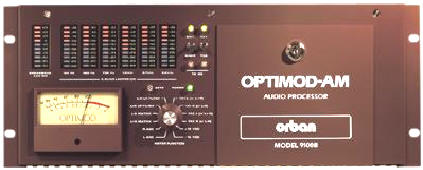





|
|
Amateur radio has many interesting aspects. First licensed as WN9QQI
in 1974, I kept my Novice callsign for about 1 year. I had 3 elmers:
My uncle Helmut (Buck), K9RYW, my cousin Randy, WB9NEL, and Jim Krymkowski,
K9WYB. My initial introduction to ham radio was through my uncle.
I could spend hours in his shack, tuning the Hammerlund HQ-110 listening to
foreign broadcast stations and other hams on the air. Buck was
extremely involved in Air Force MARS during those days. The teletype
machines were always running. It was the height of the Vietnam War and
lots of traffic was out there to be handled. At about age 11, I became
very interested in getting my own license. But, I lived 25 miles from
Buck's QTH and had no real way to get over there on a regular basis. I
would talk about ham radio with my cousin Randy, WB9NEL for hours on end
over the telephone, and I would study the FCC license manual such that I
could pass the Novice, Tech, and Advanced tests - getting close to even
being able to pass an Extra written exam. But, the code was a problem.
Then, upon turning 12, I met Jim - K9WYB. Jim owned a house on my
paper route. I saw his tower and 15 Meter dipole, built from the ARRL
handbook. I also saw the wire antennas strung out in the backyard.
I worked up the nerve and knocked on the door, asking to meet him. He
quickly invited me into his shack where I was the nicest HT32 / SX101
Hallicrafters combination I think I have ever seen - even to date. Jim
was a computer programmer for JC Penney's in Milwaukee and worked 4 days a
week, 12 hours a day. He asked me if he could help me get my Novice
license and in Fall, 1974, he gave me the code and written exam. I
waited what seemed to be an eternity to get that license, but finally my
Novice ticket arrived. I borrowed a Hammerlund HX500 transmitter and
Drake 2B receiver from my high school electronics shop teacher, Frank
Stephens, who was also the trustee of the Boys Tech High School radio club,
WB9EFV, and pounded out code on 40 and 15 meters. (I really
should consider Frank Stephens as a fourth elmer; he was a great help in my
ham radio hobby as well as my training in electronics, which set my career
path.) I also had a
homebrew 40M rig that I built which used a 6BG6 as a power oscillator,
crystal controlled, and an ARC-5 command set which I used as a receiver.
I got a lot of on air practice but could never master the 13WPM requirement
to upgrade to General. Plus, other high school activities learning to
drive, and school itself got in the way. Finally, the summer between
my Sophomore and Junior year, I got a job at an electronics firm, first in
production, and then doing mechanical drawing and final product test.
Not having time to do the code, and wanting to join my buddies and relatives
on 6M AM and 2M FM, I took the General Class written test, but failed the
code exam. My consolation prize was a Technician License which gave me
all the voice operating I wanted, along with the callsign WB9QQI. But,
I missed using the code.....
Throughout college, my ham radio activities dwindled. Finally,
while working for Motorola in the mid-1990's, and having been involved in
broadcast technologies for 15 years, I attended the Motorola Amateur Radio
Club (MARC) Field Day in 1996. I enjoyed operating the VHF tent, but
had even more fun in the SSB tent, under the direction of Harold Mowbray,
AA9AE and Bill Graf, K9RR. I made a bet with those guys that I could
get to General in 30 days, Advanced in 30 more, and Extra in a final 30
more. I nearly missed my mark on the General, but after a solid month
of testing, I took the General 13WPM code exam on the 29th day after field
day and passed. Two weeks later, I took the Advanced and Extra Written
exams. Finally, in September, with Harold instilling confidence in me,
I took the Extra 20WPM code exam at Radio Expo - a great hamfest in Grays
Lake, IL. To my amazement, I passed, even with the guy next to me
jamming his pencil into the table when he could not keep up! During
the month of September, 1996, the FCC opened up the vanity callsign program
to Extra-class licensees. I applied for W9GB, K9QI, and a few others.
I would have tried for W9QI, but it was in use. I missed out on
getting W9GB, but did get K9QI. In retrospect, K9QI was a better
choice. It was a coveted 1x2 call, it was derived from my old call,
and unlike having a pair of "Q's" to try to do phonetics with, "QI" lends
itself well to many, many choices. The only call which would have been
more appropriate for me would have been K9AM, but my friend Mark Anthony
snagged that one up.
That point in time marked a turning point for my ham radio career.
I could now use the coveted HF bands, and I could explore all kinds of new
modes. I enjoy QRP, both CW and SSB and have a FT-817, a Norcal 40A,
and a Wilderness Radio SST-30 which I regularly use for those activities.
I also have an unbuilt Elecraft K-1 kit; maybe this winter I will put it
together. I can not say enough about both the Wilderness Radio and the
Elecraft kits. I consider the Elecraft to be the Caddy of radios, but
the Wilderness kits are just as sensitive, having been designed by Wayne
Burdick of Elecraft fame, and are great kits to put together. Plus,
you can not find a nicer ham than Bob Dyer at Wilderness Radio. My
favorite is the Norcal 40A that Bob sells; I think every ham should have
one.
On the other end of the spectrum, I also have a few AM rigs. The
first 2 are old, Collins boatanchor ham rigs - the 30K1 and it's successor,
the KW-1. Both are in various states of refurbishing, but both are
currently operational. I am looking for a 30K4 or 30K5 to
restore, anyone with any leads, please let me know!
|
Verne Brune (left), former engineering design
manager for Collins Radio and project lead for the 30K1 with Jim Shoemaker
(right) standing by my 30K1 / 310A rig prior to purchase. This rig puts
out a healthy 250 watts AM and 350 watts CW using a 4-125A in the final. It
had some slight cabinet damage and a broken phenolic insulator in the 80 /
40M PA tank assembly when I acquired it. That has since been repaired.
This unit, perhaps the last off the production line and S/N 137, was once
owned by Art Collins and was reportedly his favorite rig. I can understand
why! |


In addition to the Collins AM ham rigs, I also have acquired a number of
old 250 and 1kW AM rigs. I currently have, in various states of
operation and / or repair and modification, the following broadcast
transmitter: Collins 20V2 and 300G, Gates BC1T, BC250GY, BC500GY, a
full-size Vangard 1 tube linear, and a RCA BTA1R3 and BTA-250K.
I am always looking for additional old broadcast transmitters. I am
especially interested in finding a Collins 300J and a RCA BTA-250M. In
addition, I have a Raytheon RA-250 which I have given to another ham - it is
awaiting pickup later this summer. Finally, I have purchased, but not
yet picked up, a Collins / Continental 314 / 828R1 "Pet Rock" PDM
transmitter. I am going to make a go of putting that thing on 160
Meters. Which is my favorite - they all are! But, the Collins
300G has to be the sexiest, with all of its chrome and glass on the
front panel! Processing / limiting wise, I use a modified CRL
MBL-100 News / Talk audio processor. I worked on with Gary Clarkson at
CRL in the mid-1980's developing that system for use on Radio Free Europe /
Radio Liberty. My processor has a special filter designed for amateur
use; the low pass filter has a cutoff frequency of 3.2kHz rather than the
standard 4.5, 5.0, 6.0, or 7.5kHz filters that normally come with the unit.
About 70 of these units were delivered towards the end of the cold was to
increase the effective coverage and loudness of the RFE / RL broadcast
stations. I use a CRL AGC-400, with a 50 Hz - 4kHz band-pass filter on
it's input to drive the audio chain prior to the MBL-100. I also hope
to find a used Orban 9105 HF processor some day. I have a special
3.2kHz filter designed for that unit.

 The CRL
MBL-100HF AGC / Compressor / Limiter
The Orban 9100; the 9105 is similar. |

